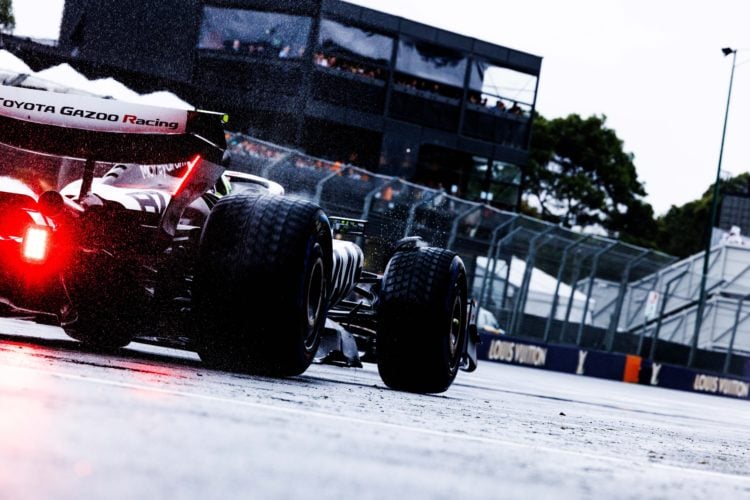The Australian Grand Prix was one of the most exciting starts to a Formula 1 season seen for some time.
Lando Norris came away leading the drivers’ championship after seeing off a late challenge from Max Verstappen.
McLaren came out of testing with the fastest car but it was clear that every team had taken inspiration from their rivals.
Every manufacturer got the chance to study their rivals’ cars and not only look at the development direction they had gone in over the winter but also try and find issues to report to the FIA.
Red Bull reported Ferrari’s car to the FIA after testing to investigate their rear wing but didn’t find any issues.
However, a report from Autoracer has discovered that changes are coming to the rules once again after studying every car at the Australian Grand Prix.
Each car was fitted with tiny cameras to study how much each rear wing’s DRS flap flexes.
What they saw from each team’s cars has forced them to make adjustments to their regulations ahead of the Chinese Grand Prix.
FIA introducing new rear-wing flexing rules for the Chinese Grand Prix

Over the winter, F1’s technical directive TD018 was updated to reduce the gap created by the DRS flap flexing at high speeds.
Changes to the front wing are coming at the Spanish Grand Prix but the rear wings had to change immediately and the report states that after Friday’s free practice sessions, the FIA had ‘no more doubts’ that every team had found a way to bypass the static tests introduced.
Previously, under 750N of load, the slot gap couldn’t exceed more than 2 mm.
However, article 3.15.17 is set to be updated for the Chinese Grand Prix to reduce that gap to just 0.5 mm.
READ MORE: Who is Rui Marques? The FIA’s new F1 race director replacing Niels Wittich
This is a 75% reduction in the tolerance compared to the previous allowance and the FIA has insisted that no ‘single team’ is being targeted by this change.
Mercedes gained the most speed between having an open and closed DRS flap in Australia, 24 km/h compared to 23 km/h for McLaren and Red Bull and 22 km/h for Ferrari.
The report goes on to say that the ‘abuse of [the] deflections’ has ‘angered’ the FIA’s technical office.
The issue they face is the 10 teams on the grid have far more resources to find workarounds to their rules and so keeping every manufacturer in check is becoming increasingly difficult.
It’s understood that while the FIA wasn’t targeting a specific car, some teams are likely to be impacted more negatively than others.
Every F1 team currently taking part in two development races ahead of 2026 regulation changes
This season is the final year of the current ruleset and while every team seems to be pushing the boundaries, soon their focus will shift to the upcoming campaign.
The 2026 Formula 1 ruleset sees arguably the biggest change to the regulations in the sport’s history.
New power units and aerodynamic systems are being introduced and another minor change to this year’s rear wings gives each team another part to focus on.
READ MORE: Christian Horner reveals what Stefano Domenicali told him to stop doing before Red Bull began to struggle
Mercedes are said to have the strongest power unit for next year which may explain why Alpine have abandoned their own engines to become a customer team.
There’s also the introduction of Audi – taking over the current Sauber team – and Cadillac to the grid and they have to wrestle with the new rules too.
However, every team looks set to have just a few days to make the necessary adjustments to their cars to avoid being disqualified in Shanghai.










Leave feedback about this